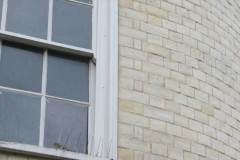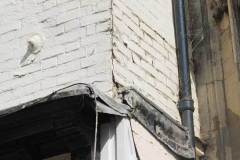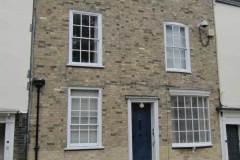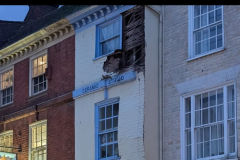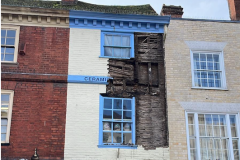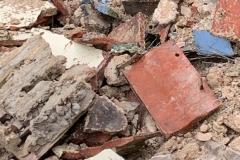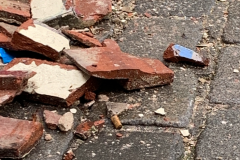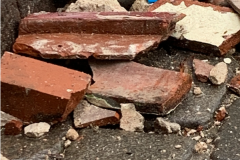Mathematical tiles have the appearance of bricks but are really tiles, hung upon wooden battons. They vary in appearance – some are very difficult to distinguish from bricks (Image 1) but others lack the flat regularity of well laid bricks (Image 2). Many walls present a mixture with bricks below and tiles above (Image 3). In many instances timber framed buildings have been ‘modernised’ using mathematical tiles. Images on this page show some examples – click to see their location. Canterbury has an unusually high density of mathematical tiles, and these are particularly prevalent around the Buttermarket and Burgate Street.
A mathematical tile symposium held in 1981 produced the following facts and estimates:
- we do not know how these tiles got their name – they have also been known as brick tiles, geometrical tiles, mechanical tiles, rebate tiles, wall tiles, and weather tiles
- of the 859 examples then known in England, 321 were in Kent and 138 of these in Canterbury city
- the earliest known use of mathematical tiles is 1724 – in Westcott Surrey
- there appears to be no correlation between use of mathematical tiles and levels of tax on bricks or on tiles
So how can you tell whether a particular example is brick or tiles? Here are some tests you can apply:
- examine the edges of the wall (corners of the building or where the wall meets windows or doorways) – a tile version needs some device, normally a wooden strip, to mask the tile edging
- see how flat and regular the face of the wall seems – an irregular surface suggests tiles or a very bad bricklayer!
- on a hot day, feel the temperature of the surface (particularly where you suspect tiles above bricks) as bricks will take longer to warm up
- if the building is old and has no brickwork at ground floor level, ask whether upper levels can really be true brick – if so, what is holding it up?
Sources: Mathematical tiles (notes of Ewell Symposium 14 November 1981 chaired by Alec Clifton-Taylor) – copy held by British Library; also Faversham Paper no. 25 Brick-tiles in the Faversham area by Terence Paul Smith
DL
Update February 2025
Mathematical tiles normally provide a pleasing and water tight frontage, but rely on the integrity of the wooden structures to which they are attached. A spectacular failure of the frontage of a building in the Buttermarket occurred on 29th January 2025 (image 1 below). By the next day the damage was far more extensive (image 2). It seems that the wooden lathes had become damp and rotten. The unfortunate failure does allow the casual observer to see some of the fallen and broken tiles at close quarters, where their shape (and the sections which are nailed and mortared to the wooden lathes) can be appreciated (images 3-5 below).
IO

